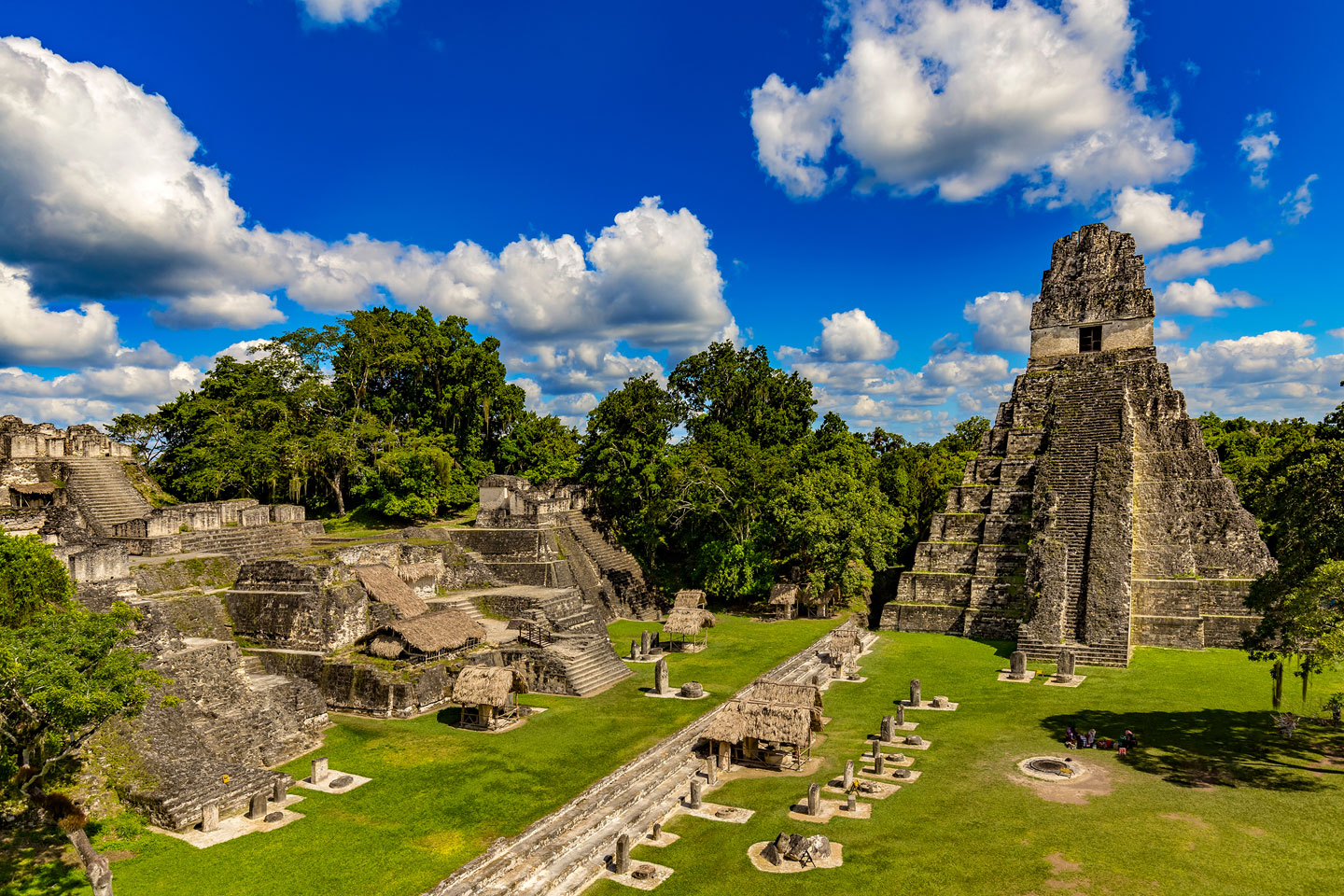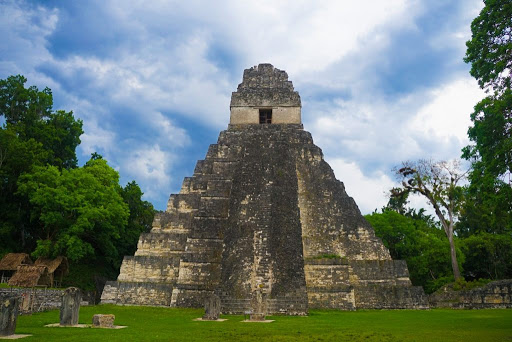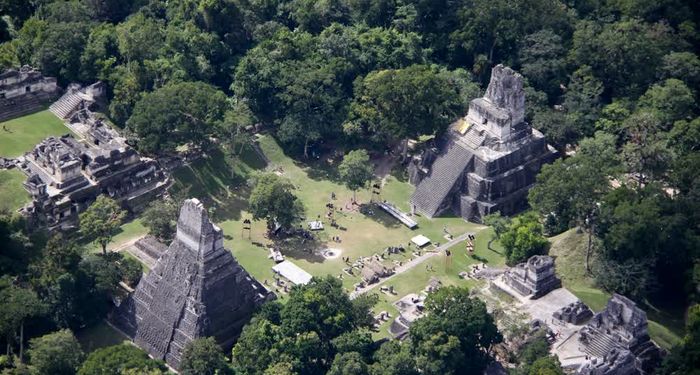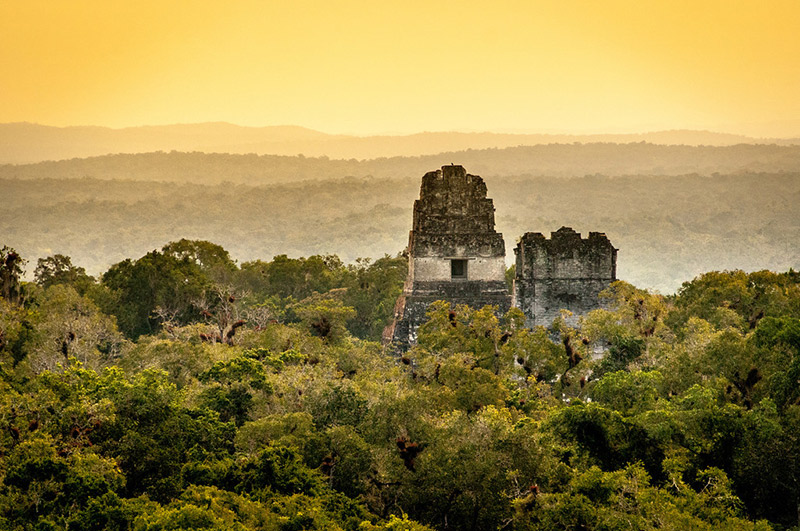Tikal

Located in Guatemala in the Petén department, Tikal is the largest city of the Maya civilization, and it is currently part of the Tikal National Park, a site reported by UNESCO as a World Heritage Site.
Tikal is not only a popular tourist destination in Guatemala but the tip of the iceberg of many other ruins left by the Mayan civilization (see the LiDAR Scans page here).
As a matter of fact, even though the ruins are located on a plain covered in the rainforest (including ceiba, trees consecrated by the Maya), many structures that are yet to be excavated were detected underground using LiDAR technology beneath the vegetation.
The city of Tikal was built according to a symbolic code relating to Mayan cosmic beliefs.
Numerous pyramidal temples rise near the Great Central, with a sophisticated decorated chamber on top of the stairways.

The cult center is made up of seven architectural complexes that house steles and altars. The Acropolis, on the other hand, does not seem to be destined for cult rites, but for residential use.

The pyramids of Tikal are extraordinary in size and style (slender lines, remarkable “crests”).
At its peak, Tikal had about 200 temples. The major ones are those known today as:
Temple 4, Two-headed Snake (64 meters);
Temple 5 (58 meters);
Temple 3, Grand Priest (55 meters);
Temple 1, Great Jaguar (48 meters);
Temple 2, of the Masks (almost 40 meters);
Temple 6, of the Inscriptions;
the Great Pyramid of the Mundo Perdido (pre-classical period) 30 meters high.
The monumental North Acropolis contained about sixteen temples (temple 33 the largest at 30 meters high);
the South Acropolis was composed of seven platforms (between 30 and 40 meters high), at the top a pyramid higher than 20 meters.
The double-pyramid complexes
The square of the Seven Temples (with small and similar structures).
The fall of Tikal is still an enigma for archaeologists and historians, with the most credited hypothesis being its absorption by the Teotihuacan culture, which had the strongest military force in Mesoamerica.

